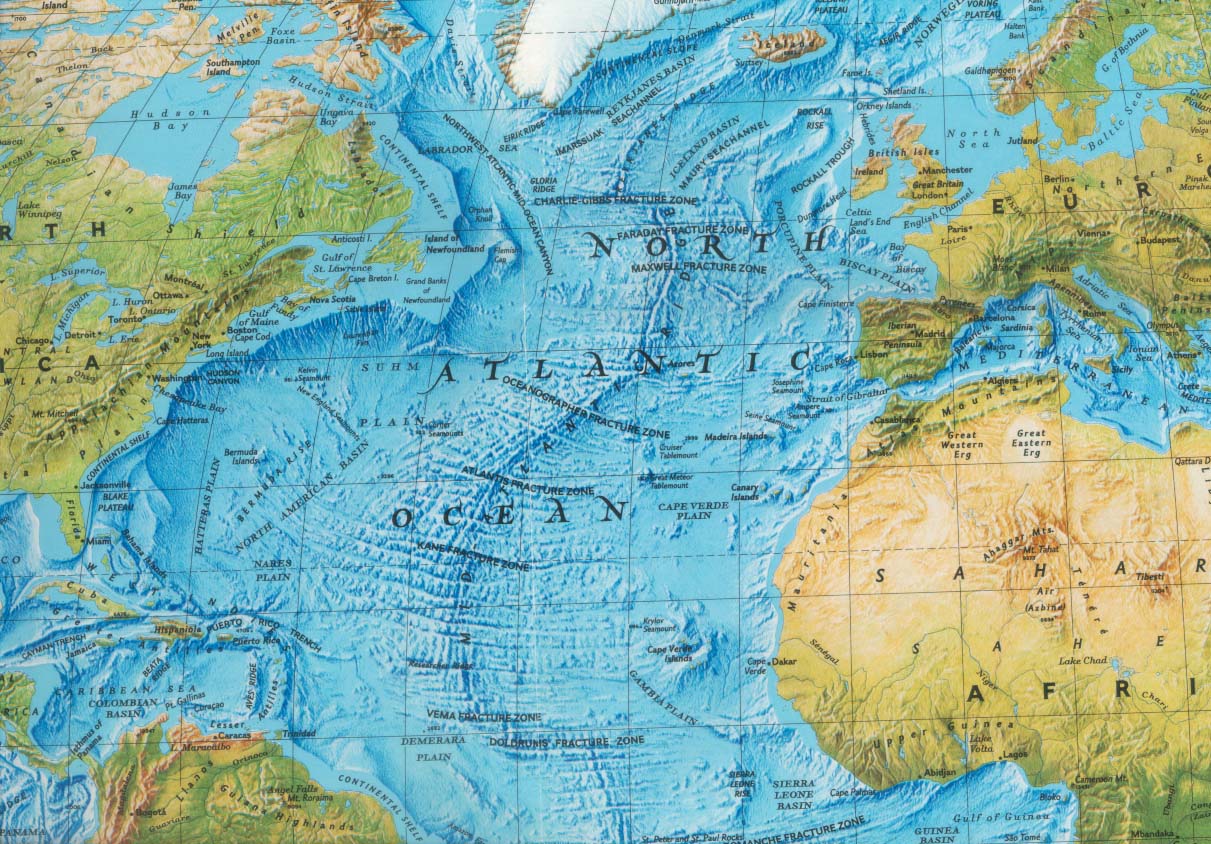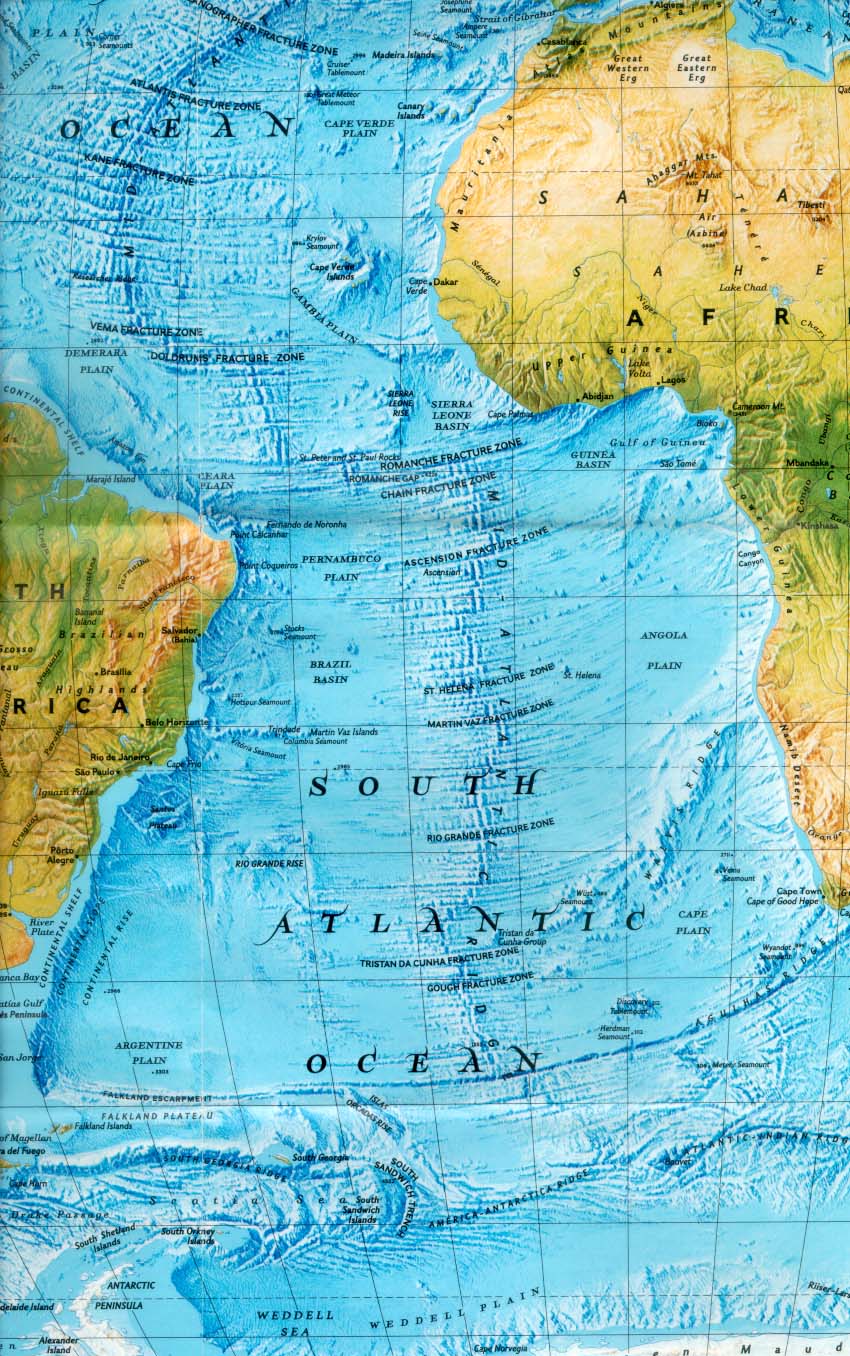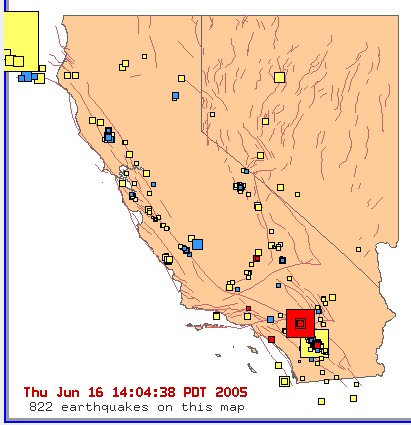|
7-9-00 - DREAM - I don't know what city I was in. I was with a man going somewhere along a sidewalk. There was two way traffic so we stayed to the right. We actually walked on the grass on the right and left the sidewalk to the people going the other way. I was telling the man that I could walk this way without even opening my eyes because the grass was so dark and the sidewalk was so white, I could tell where I was with my eyes closed. I actually had my eyes open a tiny slit and was cheating but he didn't know that. However, we came to a wider place where it was all concrete and I had to open my eyes all the way or I couldn't see which way I was going. On the road was a man riding a motorcycle with a baby on his back in a sling-type thing. He had to cross a huge chasm to go to work. He was going the opposite direction than we were. The baby always sang while he drove, but when they came to the chasm, the baby would cry out, "Mama!". This day the baby was crying out, "Mama" really loud and he stopped the motorcycle so the baby would stop crying. We were right there and he asked us if we would take care of the baby as he didn't feel right crossing the chasm and distressing the baby that much. So, we agreed we would take the baby for him. The man left then on his way to work, and we stopped at an Inn which was right there. We found out then that the baby sang songs at the Inn and his Mama came and asked us if we would stay so the baby could sing for us which would please him immensely. We didn't want to take the time, however, we stayed, and the baby sang a pretty song about "Mary!" As we left the building, there was some kind of deal where you couldn't get in unless you had a Master key but if you didn't have the key you could knock and they'd have to look to see who you were and then decide whether they wanted to let you in or not. As we were leaving, we accidentally kicked the key out the door. It was a long silver key. I really didn't want to take the Master key, but there was a man watching me and I tried kicking the key back into the door and not take it, but with the man watching me, I had to pick the key up and take it with me. We then went on our way towards the city and I went to a huge building that had a high dome on top of it and people lived way up near the top of the building. There, I met a Master key person who showed me a Master key blank which was gold and in the shape of a large square at the bottom. I compared it mentally with the Master keys I was in charge of in Milwaukee which we used in our building outside doors. When I looked closely at it, one could see that it was hinged and could bend back against itself so it wasn't as wide as it first appeared. The whole key blank was there in duplicate. I showed him that I knew how the Master key worked and showed him how the Master keys looked that I was familiar with. They were only half as wide. I then went on down the hallway inside the domed building to the other end where there was a maintenance worker sitting waiting for someone to come and inspect the building. I was very impressed how beautiful it was outside the window where he was sitting; immense flower beds were right there. I couldn't see the door and assumed it was around a slight corner next to the window. However, off to the side of this hallway, the floor of the dome went right on down to the bottom of the dome which was a mirror reflection so to speak of the dome overhead, it went down to almost a point on the bottom where I could see a small circle from which the dome walls went upward. Inside the building was built like a ball and we were inside of it. The people lived above that. The inspector came and I was off to the side and could hear them speaking about the roof of the dome ... it had cracked. The inspector told the maintenance man that the first crack had come and they had just watched it zip across the ceiling and it wasn't dangerous so they had just paid "Mary" the owner ... $3,000,000 for the damage. However, a new crack had just opened up and he took a long stick and I saw him reach way up to the top of the dome and show the maintenance man that huge sections of the dome were now loose and he pushed against the concrete dome and it creaked ominously. I watched as huge portions of the dome pushed upward ... punky and soft like they could easily fall down ... like it was water soaked from above. I felt really afraid that the dome would collapse at some point and all those people would die when they fell into the open space where we were now standing because they didn't know how to fix the domed ceiling. When it cracked, there was no stopping it, and there was no way to stop the seeping of the water which was damaging the domed ceiling either. The further cracking and falling in of the ceiling was inevitable. I tried to envision how it could be fixed perhaps in small sections, but with all those people living above the dome ... it was feat way beyond my imagination.
|
|||||
|
The
end, Ethiopia in 2006 for/to her
Ethiopia
Witnesses Rare Earth Split
2005-12-29 Atalay
said there were no immediate concerns about the Afar region, noting
that it would take a couple of million years before the area turns
into an ocean basin.
|
|||||
|
Posted by: GradyPhilpott
On: Sat December, 10 2005 @ 14:39 GMT
Since September, scientists from Africa, Europe and the United
States have been monitoring a thirty-seven mile long, thirteen foot
wide fissure in the Afar desert in Ethiopia. They believe that in
about a million years this process will progress to the point that a
new ocean basin will have formed. They have noted that the earth's
crust under the fissure resembles the crust at the edges of the Red
Sea. The process is proceeding at a pace of .08 inches per year.
original news source:
www.sfgate.com Ethiopian, American and European researchers have observed a fissure in a desert in the remote northeast that could be the "birth of a new ocean basin," scientists said Friday. Researchers from Britain, France, Italy and the U.S. have been observing the 37-mile long fissure since it split open in September in the Afar desert and estimate it will take a million years to fully form into an ocean, said Dereje Ayalew, who leads the team of 18 scientists studying the phenomenon. The fissure, now 13 feet wide, formed in just three weeks after a Sept. 14 earthquake in a barren region called Boina, some 621 miles north east of the capital, Addis Ababa, said Dereje. "We believe we have seen the birth of a new ocean basin," said Dereje of Addis Ababa University. "This is unprecedented in scientific history because we usually see the split after it has happened. But here we are watching the phenomenon." Please visit the link provided for the complete story. I can understand why scientist are excited about this phenomenon, even though there is no guarantee that the earth will still be here a million years from now. Not that there is any reason to believe that it won't, but a lot of things can happen in a million years. This process does remind us that our planet is a dynamic body that just might surprise us all by negating every doomsday scenario we can invent and find revitalization in ways we could could never anticipate. |
|||||
|
Iceland Lake Disappearing Into New Crack in Earth
Bijal P. Trivedi
for National Geographic Today
October 1, 2001
Icelanders are accustomed to their land being stretched, split, and torn
by violent earthquakes and haphazardly rebuilt by exploding volcanoes.
But everyone was surprised when a large lake began to disappear into a
long fissure created by one of last summer's earthquakes. "If you put your ear to the ground, you can hear the lake draining," said geologist Amy Clifton of the Nordic Volcanological Institute in Reykjavik, Iceland. "It sounds like water going down the sink." Last year, during a leisurely Sunday drive, a geologist noticed a large gash in the landscape about 20 kilometers (13 miles) from Reykjavik and reported it to Clifton. When she arrived she found a fissure—about a foot wide and 400 meters (1,280 feet) long—that led directly into Lake Kleifarvatn and disappeared beneath the water. Lake Kleifarvatn, which measured about six kilometers (3.7 miles) long and 2.3 kilometers (1.4 miles) wide last year, has shrunk dramatically. Now it is only 3.5 kilometers long and roughly 1.8 kilometers wide, said Clifton. Kleifarvatn is draining at about one centimeter (one-third of an inch) a day, according to Clifton. "You can almost see the lake level drop," she said. Summerhouses that were once mere steps from waterfront are now more than a kilometer away from the water's edge. The placid waters have dropped more than four meters in the last year. In their place is a barren lake bed speckled with sulphur-rimmed thermal springs that spit boiling water and mud. Clifton spends much of her time mapping and measuring "rips, gashes, and holes" in the Icelandic landscape. Describing herself as a "walking pencil," because her treks are all mapped by global positioning system (GPS) technology, she investigates open cracks, torn vegetation, rock falls, sinkholes, and other disturbances and tries to determine what caused them. But what phenomenon created the large fissure at Lake Kleifarvatn is an enigma. "I couldn't find an earthquake in our database that was big enough to cause such a huge rupture in the surface," said Clifton. She and some of her colleagues think a "quiet earthquake" may be responsible. Explaining such a scenario, Clifton said the water may have "lubricated the fault lines, allowing them to slide quietly and slowly, preventing the shock waves that would normally accompany an earthquake." The earthquake thought to be responsible for the fissure at Lake Kleifarvatn occurred last year on June 17, about 80 kilometers (49 miles) east in the South Icelandic seismic zone. "No one ever expected earthquakes in this region to affect the surface in the Reykjanes Peninsula, where Lake Kleifarvatn is located," said Clifton. Clifton hopes to eventually understand the relationship between the movement of faults deep within Earth and their surface effects in the region. Such knowledge is important for mapping areas that may be subject to future hazards, especially in regions where the population is growing. While the Lake's dramatic disappearance is, for Clifton, "alarming, interesting, and unusual," she and her colleagues assume the waters will return. The last time a similar event happened was in 1912, after a magnitude 7 earthquake, and it took about three decades for the water level to normalize, she said. Iceland experiences violent geological events because it sits at the Mid-Atlantic ridge—the boundary of the North American and European continental plates. The North American plate is shifting westward and the European plate is moving eastward. In the middle is a "hot spot," which spews the magma that has created the island of Iceland. Iceland grows by two centimeters (three-fourths of an inch) every year because of stretching and building caused by the combination of plate movements and volcanic activity. Clifton said: "Iceland is a natural laboratory for studying this stretching and understanding the time scale on which these events occur." FROM: http://news.nationalgeographic.com/news/2001/10/1001_lostlake_2.html
|
|||||
| Maps of Atlantic Ocean from http://www.greatdreams.com/bermuda.htm | |||||
|
|||||
|
EARTHQUAKE
IN SRI LANKA TSUNAMI
IN OUR FUTURE
|
|||||
|
The California Earthquake
Prediction Evaluation Council, a group of eight ... The red lines on the map below are the cracks in the earth that move almost continuously
|
|||||
AFRICA'S NEW OCEAN A Continent Splits Apart
Normally changes to our geological environment take place almost imperceptibly. A life time is too short to see rivers changing course, mountains rising skywards or valleys opening up. In north-eastern Africa's Afar Triangle, though, recent months have seen hundreds of crevices splitting the desert floor and the ground has slumped by as much as 100 meters (328 feet). At the same time, scientists have observed magma rising from deep below as it begins to form what will eventually become a basalt ocean floor. Geologically speaking, it won't be long until the Red Sea floods the region. The ocean that will then be born will split Africa apart. The Afar Triangle, which cuts across Ethiopia, Eritrea and Djibouti, is the largest construction site on the planet. Three tectonic plates meet there with the African and Arabian plates drifting apart along two separate fault lines by one centimeter a year. A team of scientists working with Christophe Vigny of the Paris Laboratory of Geology reported on the phenomenon in a 2006 issue of the Journal of Geophysical Research. While the two plates move apart, the ground sinks to make room for the Red Sea and the Gulf of Aden. Bubbling magma and the smell of sulphur A third crevice cuts south, splitting not far from Lake Victoria. One branch of the rift runs to the east, the other to the west of the lake. The two branches of this third crevice are moving apart by about one millimeter a year. The dramatic event that Ayalew and his colleagues witnessed in the Afar Desert on Sept. 26, 2005 was the first visual proof of this process -- and it was followed by a week-long series of earthquakes. During the months that followed, hundreds of further crevices opened up in the ground, spreading across an area of 345 square miles. "The earth has not stopped moving since," geophysicist Tim Wright of the University of Oxford says. The ground is still splitting open and sinking, he says; small earthquakes are constantly shaking the region. Scientists have made repeated trips to the area since the drama of last September. Locals have reported a number of new cracks opening in the ground, says geologist Cynthia Ebinger from the University of London, and during each visit, new crevices are discovered. Fumes as hot as 400 degrees Celsius (752 degrees Fahrenheit) shoot up from some of them; the sound of bubbling magma and the smell of sulphur rise from others. The larger crevices are dozens of meters deep and several hundred meters long. Traces of recent volcanic eruptions are also visible. In a number of places, cracks have opened up beneath the thin layer of volcanic ash that covers the region. As there is no ash in the fissures, it's clear that they opened up after the volcanic eruptions, most of which took place at the end of September or in October, 2005. A number of locals who fled the eruptions have reported that a black cloud of ash -- spewed out of the Dabbahu volcano -- darkened the sky for three days. A new ocean floor on the Earth's surface Basalt magma has risen into some of the crevices. For the moment, Ayalew explains, the lava seems not to be rising further. A number of recent eruptions, though, have left layers of new basalt lava on the Earth's surface. And it's the exact same kind of lava that spews out of volcanic ridges deep under the ocean -- a process which slowly pushes older lava sediments away on either side. The process has only just begun in the Afar Triangle -- and scientists for the first time can witness the birth of a new ocean floor. The source of the African magma looks to be a gigantic stream of
molten rock rising from beneath the Earth's crust and slicing through
the African continental plate like a blow torch. It's a process that
began thirty million years ago when lava broke through the continent for
the first time, separating the Arabian Peninsula from Africa and
creating the Red Sea.
|
|||||
|
Thanks, Dee, for your excellent information on these Earth cracks.
The fact that Iceland also has this process leads to some UHA
of the two locations, which seem to be yin and yang principles
functioning as One.
Anomalies hint at magnetic pole
flip - (10 April 2002)
http://www.newscientist.com/article.ns?id=dn2152 South African anomaly They used data from the Ørsted satellite to study strange variations in the Earth's magnetic field. In particular, one large patch under South Africa is pointing in the opposite direction from the rest of the Earth's field and has been growing for hundreds of years. The anomalies have already reduced the overall strength of the planet's magnetic field by about 10 per cent. See also superplumes rising from the Earth's mantle. There's one near South Africa (see, too, the South African anomaly, above) and another is off the eastern coast of Australia.. Superplumes Rumble Inside Earth (19 April 2002) http://www.earthchangestv.com/secure/Breaking_News/April2002/0419superplumes.htm http://www.berkeleydailyplanet.com/article.cfm?archiveDate=04-19-02&storyID=11479 |
|||||
|
POLE
SHIFT II - THE CRACK IN THE WORLD POLE
SHIFT II -
|
|||||
| EARTHQUAKES
- DATABASE
DREAMS OF THE GREAT EARTHCHANGES - MAIN INDEX
|
|||||










